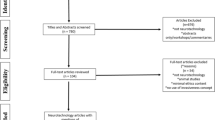Abstract
According to a standard view, the physical boundary of the person—the skin-and-skull boundary—matters morally because this boundary delineates between where the person begins and the world ends. On the basis of this view we make a distinction between invasive interventions that penetrate this boundary and non-invasive interventions that do not. The development of neuroprosthetics, however, raises questions about the significance of this boundary and the relationship between person and body. In particular it has been argued by appeal to the Extended Mind thesis that mind and person can extend beyond the body, and hence the skin-and-skull boundary is of questionable significance. In this paper I argue that the Extended Mind thesis is consistent with the ethical relevance of the skin-and-skull barrier. Although it can be argued that cognitive processes and aspect of mind can extend beyond the skin-and-skull boundary as EM claims, it does not follow that the person is also extended beyond this boundary. The moral sense of person is closely related to the notion of person as a subject of experiences and this, in turn, is related to the sensory and somatosensory aspects of the body. The development of neuroprosthetics provides us with reason to see that persons can be variously embodied, but this is consistent with the functional and ethical significance of the skin-and-skull boundary.
Similar content being viewed by others
References
Anderson, J. 2008. Neuro-prosthetics, the extended mind and respect for persons disability. In The contingent nature of life, ed. M. Düwell et al., 259–272. Dordrecht: Springer.
Parens, E. 2005. Authenticity and ambivalence. The Hastings Center Report 35(3): 34–41.
DeGrazia, D. 2000. Prozac, enhancement, and self-creation. The Hastings Center Report 30(2): 34–40.
Monti, M.M., et al. 2010. Willful modulation of brain activity in disorders of consciousness. NEJM 362: 579–589.
Schiff, N.D., et al. 2005. FMRI reveals large-scale network in minimally conscious patients. Neurology 64: 514–523.
Bauby, J.-D. 1997. The diving bell and the butterfly. New York: Vintage International.
Fenton, A., and S. Alpert. 2008. Extending our view on using BCI’s for Locked-in-sydrome. Neuroethics 1(2): 119–132.
Clausen, J. 2008. Moving minds: Ethical aspects of motor neural prostheses. Biotechnology Journal 3(12): 1493–1501.
Clausen, J. 2009. Man, machine and in between. Nature 457: 180–1081.
Patil, P.G., and A. Dennis. 2008. The development of brain-machine interface neuroprosthetic devices. Neurotherapeutics 5: 137–146.
Lebedev, Mikhail A., and Miguel A.L. Nicolelis. 2006. Brain-machine interfaces: Past, present and future. Trends in Neurosciences 29: 536–546.
Bach-y-Rita, P., and S.W. Kercel. 2003. Sensory substitution and the human-machine interface. Trends in Cognitive Sciences 7(12): 541–546.
Donoghue, John P. 2008. Bridging the brain to the world: A perspective on neural interface systems. Neuron 60: 511–521.
Hochberg, Leigh R., et al. 2006. Neuronal ensemble control of prosthetic devices by a human with tetraplegia. Nature 442: 164–171.
Anderson, R.A., et al. 2004. Cognitive neural prosthetics. Trends in Cognitive Sciences 8: 486–493.
Clark, Andy, and David Chalmers. 1998. The Extended Mind. Analysis 58: 7–19.
Clark, Andy. 2005. Intrinsic content, active memory and the extended mind. Analysis 65: 1–11.
Nelson, J.L. 2003. Hippocrates maze: Ethical explorations of the medical labyrinth. Maryland: Rowan and Littlefield.
Levy, Neil. 2007. Rethinking neuroethics in the light of the extended mind thesis. The American Journal of Bioethics 7: 3–11.
Clark, Andy. 2007. Re-inventing ourselves: The plasticity of embodiment, sensing, and mind. The Journal of Medicine and Philosophy 32: 263–282.
Author information
Authors and Affiliations
Corresponding author
Rights and permissions
About this article
Cite this article
Buller, T. Neurotechnology, Invasiveness and the Extended Mind. Neuroethics 6, 593–605 (2013). https://doi.org/10.1007/s12152-011-9133-5
Received:
Accepted:
Published:
Issue Date:
DOI: https://doi.org/10.1007/s12152-011-9133-5




